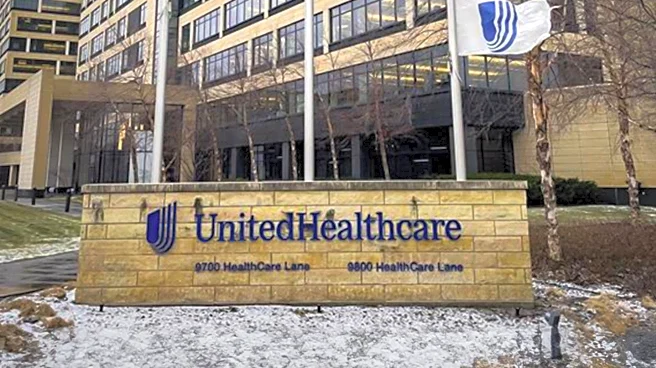What's Happening?
Healthcare organizations are increasingly adopting digital signage as part of their technological investments to improve patient and provider experiences. This shift is driven by the need to navigate financial
challenges while caring for an aging and anxious patient population. Digital signage offers several benefits, including efficient information display, interactive touchscreens, and multilingual content sharing. It helps in wayfinding, creating calming atmospheres, sharing important updates, and enhancing clinician workflows. The technology is seen as a holistic part of system redesign, with healthcare executives prioritizing technology investments in 2025. Digital signage is crucial for providing a consistent experience across healthcare facilities, addressing navigation issues, and improving patient engagement through interactive features.
Why It's Important?
The integration of digital signage in healthcare settings is significant as it addresses several challenges faced by the industry. It improves patient navigation in complex facilities, reduces anxiety by providing real-time updates, and enhances communication between patients and providers. By offering multilingual and interactive content, digital signage caters to diverse patient populations, improving their understanding and comfort. Additionally, it streamlines clinician workflows, reducing errors and improving efficiency. The adoption of digital signage reflects a broader trend towards digital transformation in healthcare, aiming to enhance patient outcomes and reduce long-term costs. Stakeholders, including marketing leaders and IT chiefs, recognize the near- and long-term benefits of a connected digital signage ecosystem.
What's Next?
Healthcare leaders are expected to continue modernizing their deployment of digital signage from front desks to check-up rooms. The focus will be on expanding the use of digital signage to positively impact various elements of patient and provider experiences, including education, information dissemination, and operational efficiency. As healthcare systems become more connected, considerations around reliability, security, and performance will be crucial. Conversations about minimizing threat vectors and endpoints will be essential as digital signage becomes more integrated into healthcare environments. The potential for digital signage to incrementally improve the healthcare environment is significant, with both patients and providers standing to benefit greatly from its deployment.
Beyond the Headlines
The adoption of digital signage in healthcare settings also raises ethical and cultural considerations. Ensuring that content is accessible and respectful to diverse patient populations is crucial. The technology's ability to provide real-time updates and personalized content can empower patients, but it also requires careful management to protect patient privacy and data security. As digital signage becomes more prevalent, healthcare providers must navigate the balance between technological expansion and maintaining patient trust. The long-term shift towards digital transformation in healthcare may also influence cultural perceptions of healthcare delivery, emphasizing the importance of technology in patient care.











